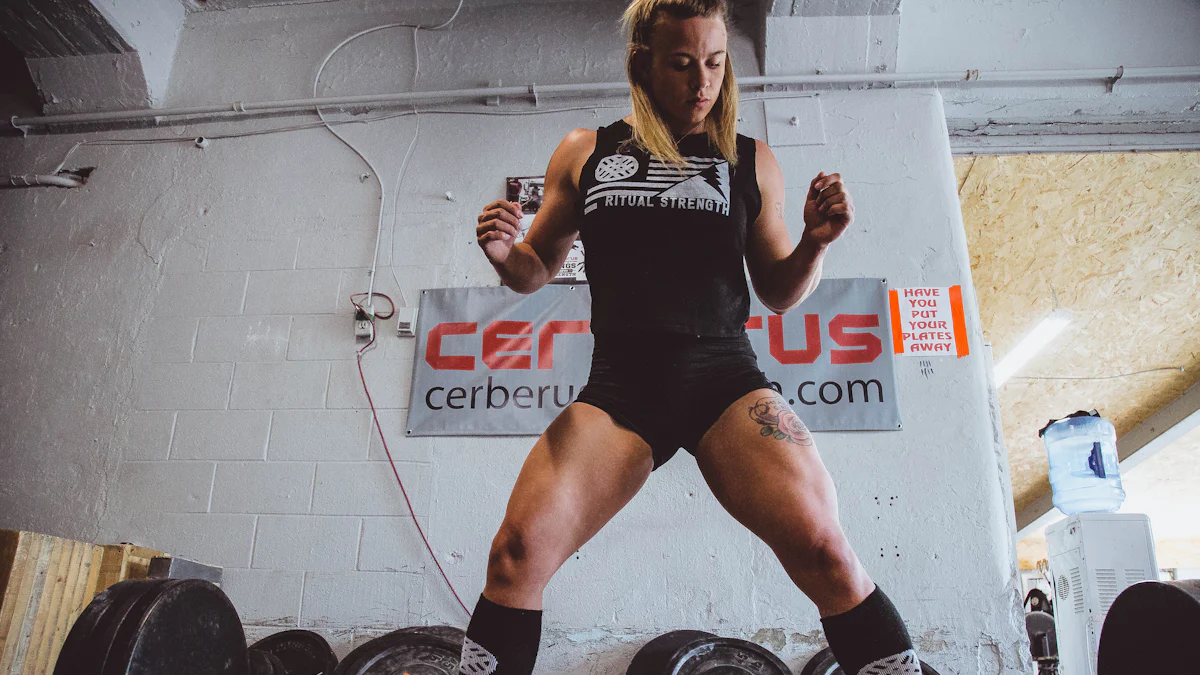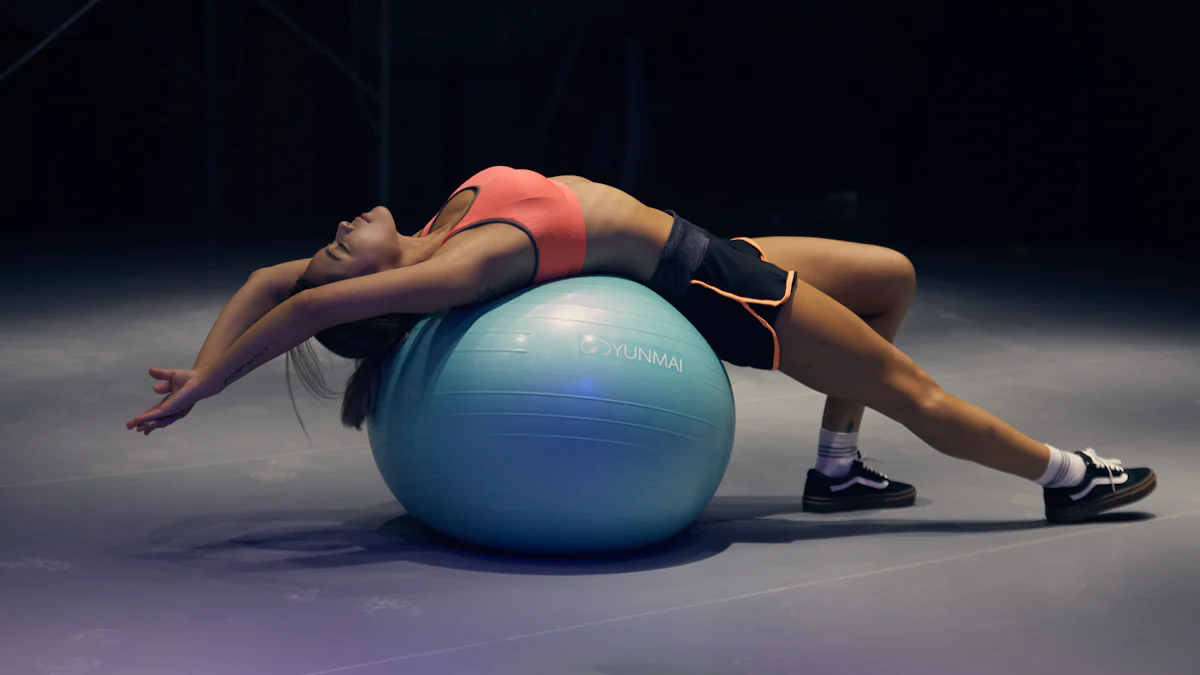
Master Compound Lifts for Maximum Strength Gains

Compound lifts engage multiple muscle groups at once. These exercises form the foundation for strength gains. The Ultimate Guide to Building Strength with Compound Lifts highlights their importance. Compound lifts boost muscle growth and improve overall fitness. These exercises enhance workout efficiency and maximize results. Regular practice leads to significant strength improvements.
The Ultimate Guide to Building Strength with Compound Lifts
Benefits of Compound Lifts
Engaging Multiple Muscle Groups
Compound lifts activate several muscle groups. This activation leads to more efficient workouts. You achieve greater strength gains with compound exercises.
Efficiency in Workouts
Compound lifts save time during workouts. You perform fewer exercises while targeting more muscles. This efficiency helps you reach fitness goals faster.
Balanced Muscle Development
Balanced muscle development occurs with compound lifts. These exercises ensure even growth across major muscle groups. You avoid imbalances that can lead to injuries.
Hormonal Benefits
Increased Testosterone Production
Compound lifts boost testosterone levels. Higher testosterone supports muscle growth. You experience improved strength and performance.
Enhanced Growth Hormone Release
Growth hormone release increases with compound lifts. This hormone aids in muscle repair and growth. You recover faster and build muscle more effectively.
Time Efficiency
Maximizing Workout Time
You maximize workout time with compound lifts. Fewer exercises mean shorter sessions. You achieve more in less time.
Reducing Gym Sessions
Fewer gym sessions become possible with compound lifts. You maintain or improve fitness with less frequent visits. This approach fits busy schedules and enhances consistency.
The ‘Big Five’ Compound Lifts

Squat
Muscles Targeted
The squat targets several major muscle groups. The primary focus is on the quadriceps, hamstrings, and glutes. The core muscles also engage during the squat. The squat provides a comprehensive lower-body workout.
Variations
Different variations of the squat exist. The back squat involves placing a barbell on the upper back. The front squat requires holding the barbell in front of the shoulders. The goblet squat uses a dumbbell or kettlebell held at chest level. Each variation offers unique benefits and challenges.
Deadlift
Muscles Targeted
The deadlift works multiple muscle groups. The primary focus is on the lower back, glutes, and hamstrings. The core and forearms also engage during the lift. The deadlift builds overall strength and stability.
Variations
Several deadlift variations enhance training. The conventional deadlift uses a hip-width stance. The sumo deadlift involves a wider stance with toes pointing outward. The Romanian deadlift emphasizes the hamstrings with a slight knee bend. Each variation targets muscles differently and adds variety to workouts.
Bench Press
Muscles Targeted
The bench press primarily targets the chest muscles. The shoulders and triceps also engage during the lift. The bench press builds upper body strength and muscle mass. The exercise forms a key component of The Ultimate Guide to Building Strength with Compound Lifts.
Variations
The bench press offers several variations. The flat bench press is the standard form. The incline bench press targets the upper chest more intensely. The decline bench press focuses on the lower chest. Each variation provides distinct benefits for muscle development.
Overhead Press
Muscles Targeted
The overhead press targets the shoulders. The exercise also engages the triceps and upper chest. Core muscles stabilize the body during the lift. The overhead press builds upper body strength effectively.
Variations
Several variations of the overhead press exist. The standing barbell press involves lifting a barbell overhead while standing. The seated dumbbell press uses dumbbells in a seated position. The push press adds a slight leg drive for extra power. Each variation offers unique benefits for strength development.
Bent-Over Row
Muscles Targeted
The bent-over row primarily targets the back muscles. The exercise also engages the biceps and shoulders. Core muscles help maintain stability during the movement. The bent-over row enhances overall back strength and posture.
Variations
Different variations of the bent-over row provide diverse challenges. The barbell row uses a barbell with an overhand grip. The dumbbell row involves lifting one dumbbell at a time. The T-bar row uses a specialized bar for added intensity. Each variation contributes to comprehensive back development.
Proper Technique for Safety and Effectiveness

General Safety Tips
Warm-Up Importance
A proper warm-up prepares the body for exercise. Warm muscles reduce the risk of injury. A warm-up increases blood flow to the muscles. Increased blood flow enhances performance during workouts. Dynamic stretches and light cardio serve as effective warm-up activities.
Correct Form
Correct form ensures safety during compound lifts. Proper alignment prevents strain on joints and muscles. Incorrect form leads to injuries over time. Focus on maintaining a neutral spine during lifts. Engage the core to support the back and stabilize the body.
Technique Tips for Each Lift
Squat Technique
The squat requires a strong stance. Feet should be shoulder-width apart. Keep the chest up and the back straight. Lower the body by bending the knees. Push through the heels to return to the starting position.
Deadlift Technique
The deadlift starts with feet hip-width apart. Grip the barbell with both hands. Keep the back straight and the chest lifted. Engage the core and lift the barbell by extending the hips and knees. Lower the barbell with control to complete the lift.
Bench Press Technique
The bench press begins with lying flat on a bench. Grip the barbell slightly wider than shoulder-width. Lower the barbell to the chest level. Press the barbell upward until the arms are fully extended. Maintain control throughout the movement.
Overhead Press Technique
The overhead press involves standing with feet shoulder-width apart. Hold the barbell at shoulder height. Press the barbell overhead by extending the arms. Keep the core engaged for stability. Lower the barbell back to the starting position with control.
Bent-Over Row Technique
The bent-over row starts with a slight bend in the knees. Hinge at the hips while keeping the back straight. Grip the barbell with both hands. Pull the barbell toward the torso by engaging the back muscles. Lower the barbell with control to complete the movement.
Incorporating Compound Lifts into Your Routine
Designing a Balanced Workout Plan
Frequency and Volume
A balanced workout plan requires attention to frequency and volume. You should perform compound lifts two to three times per week. This frequency allows for adequate muscle recovery. Each session should include three to five sets of each lift. Aim for six to twelve repetitions per set. This range promotes muscle growth and strength gains.
Progression Strategies
Progression strategies help you advance in your lifting routine. You can increase the weight you lift over time. Gradually add small increments to your lifts. This method challenges your muscles and promotes growth. You can also vary the number of sets and repetitions. Adjusting these variables keeps your workouts effective. Consistent progression leads to continuous improvement.
Expected Outcomes
Strength Improvements
Regular incorporation of compound lifts results in noticeable strength improvements. You will lift heavier weights with ease. Enhanced strength benefits daily activities. Tasks like lifting groceries or climbing stairs become easier. Increased strength also boosts confidence in physical abilities.
Fitness Enhancements
Compound lifts contribute to overall fitness enhancements. You will experience better muscle tone and definition. Improved cardiovascular health accompanies regular lifting. Your endurance and stamina will increase. These benefits support a healthier lifestyle. Enhanced fitness positively impacts mental well-being.
Compound lifts play a crucial role in achieving strength gains. These exercises engage multiple muscle groups, leading to efficient workouts and balanced muscle development. You should integrate compound lifts into your routine for maximum benefits. Consistent practice will lead to noticeable improvements in strength and overall fitness. Embrace the challenge of compound lifts to reach your strength goals. Stay committed and witness the transformation in your physical abilities.


